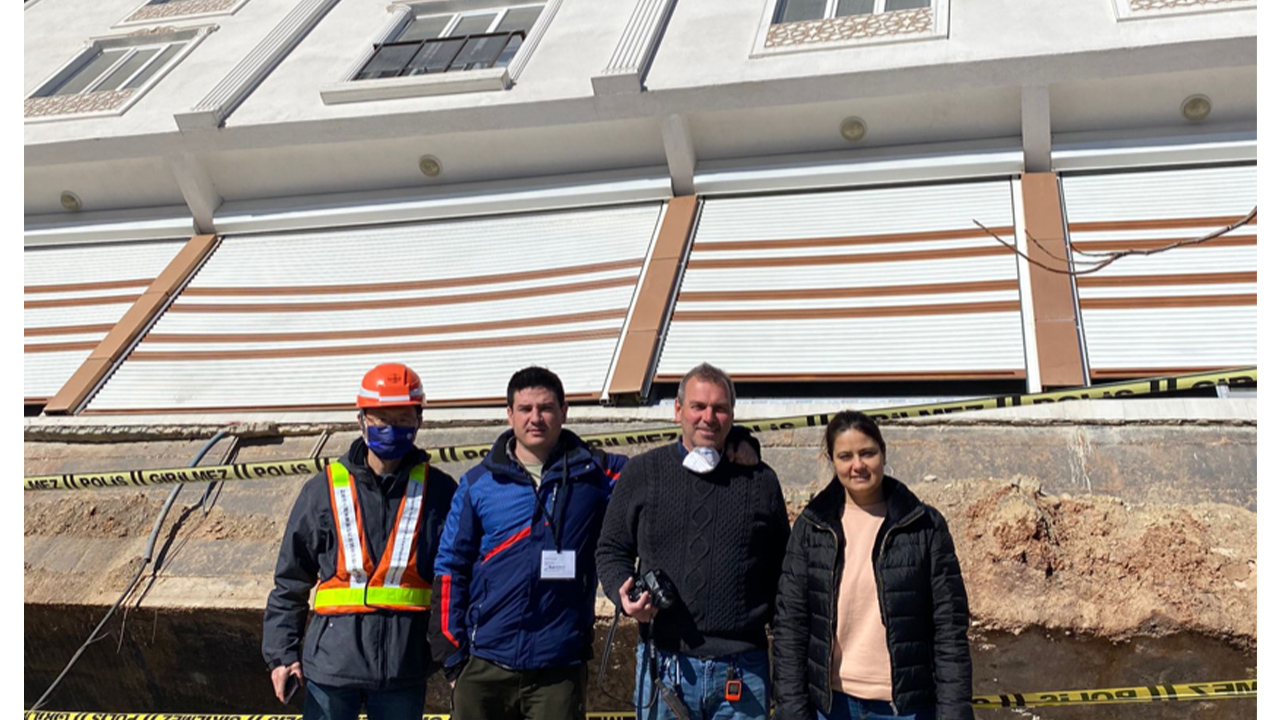
Dr. Gulen Ozkula, University of Wisconsin-Platteville assistant professor of civil engineering, recently returned from a weeklong trip to Turkey, where she joined a reconnaissance team assessing and gathering data on the damage caused by the pair of 7.8- and 7.5-magnitude earthquakes that devastated southeastern regions of the country on Feb. 6.
Ozkula is originally from Izmir, Turkey, and has a Ph.D. in structural engineering, with a research focus in the evaluation of steel structures and seismic design – the structural analysis of buildings, bridges and roads with the goal of making them resistant to earthquakes. Ozkula worked with several teams and organizations from both Turkey and the United States. This included the Turkey Society of Civil Engineers—an organization she has been involved with since she was an undergraduate student — as well as colleagues from major universities in Turkey. From the U.S., Ozkula worked with the nonprofit organization the Earthquake Engineering Research Institute, which operates a special program – Learning from Earthquakes – which conducts field reconnaissance and data collection at earthquake events worldwide.
“Whenever an earthquake happens, it’s extremely important to send someone immediately to the region, especially someone who knows the language, so that they can have connections from the locals and professors in the region,” said Ozkula.
This is the second time Ozkula has been a part of a reconnaissance team following an earthquake — the first being in 2020, when a 6.9-magnitude earthquake struck her hometown.
“This was my second time to learn from an earthquake, but this was on another level,” she said.
Ozkula arrived in Turkey on Feb. 19 – two weeks after the earthquake. She explained how crucial the timing post-event is.
“The most important thing for earthquake reconnaissance is to get perishable data right away,” said Ozkula.
Ozkula explained the first three days are focused solely on the rescue teams’ efforts. By the third day, teams of professors and industry experts arrive to evaluate the damaged buildings and assess the cause of collapse — whether it’s the fault of an engineer or deficiencies in building code. It is typical, said Ozkula, for the government to station a soldier outside of the many partially collapsed or damaged buildings, to prevent residents from returning to the unsafe structure to retrieve their belongings. Given the large scale of this earthquake – with 10 cities affected and an estimated 5,000 heavily damaged buildings – it wasn’t possible to monitor the entry of each building. Instead, Turkish authorities begin demolishing the heavily-damaged buildings.
“That’s why it is important for us to go right away,” said Ozkula. “Once the buildings are demolished or totally collapsed, I don’t know why it collapsed, from a research point of view. We need to see the buildings that are heavily damaged, but not yet collapsed, to get some data and have an understanding of what happened.”
While Ozkula and colleagues from the U.S. were not able to travel to Turkey immediately, a team of professors in Turkey were on site by the third day and were in constant communication with Ozkula.
“If this earthquake was on a smaller scale, in only one or two cities, they most likely would have demolished all the buildings by the time I got there,” she said. “But, because this was such a huge earthquake, they couldn’t demolish them all yet.”
Once she arrived, Ozkula and her team traveled to six cities and assessed the damage on the partially collapsed buildings to gather data. She and members of her team are writing a report for the Earthquake Engineering Research Institute and a paper detailing their preliminary field observations. After this, members of the team will individually pursue research on topics of interest. Ozkula and a geotechnical engineering colleague plan to collaborate to research the soil-structure interaction and its effect on seismic performance.
Ozkula hopes that the data collected and further research can help prevent future earthquakes from having as devastating effects. Turkey has two main fault zones – the East Anatolian, where the February earthquakes occurred – and the North Anatolian.
“We are expecting another earthquake on the North Anatolian Fault Line, and that one passes through Istanbul where nearly 20 million people live,” said Ozkula, who added that the U.S. also has great interest in the research, as the East Anatolian Fault Line shares many similar characteristics to California’s San Andreas Fault Line.
Ozkula reflected on the experience, which left her with more to take away than technical data and research.
“As a civil engineer, I see the technical part of it, but there is always a psychological part to it too, which was very interesting to us,” said Ozkula. “While we were there, especially since I’m a native speaker, I was talking to the people. I know the people. I know the culture. Usually, in any region of the world, when you lose a loved one, there is a mourning period. However, when we talked to survivors and asked if they lost any loved ones, some would say, ‘I lost my wife, or my daughter, or my son.’ They had no emotion; it seemed like they were still in shock. They lost their families and friends, and every single day they have to deal with the reality of the earthquake.”
Ozkula said by the time they arrived, there had already been 3,000 aftershocks – more than 20 of them with a magnitude greater than 5.
“On top of that, they had already lived through the first earthquake,” she said. “Some were under the buildings. That was a different side we saw than just the technical part.”